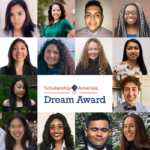By MACKENZIE RYAN
Florida Today
MELBOURNE, Fla. (AP) _ It’s a challenge tackled by engineers in the space program: Design a garment that can withstand a certain level of heat.
But next school year, Palm Bay High students will be the ones trying to find the solution.
Thanks to a partnership with NASA, students will be designing prototypes in engineering classes, deconstructing space garments used in fashion design courses, testing material in chemistry labs, and writing about the project for English assignments.
Across the nation, many schools are taking steps to integrate different academic disciplines, part of a growing effort to better connect science and technology with innovative thinking.
In Brevard, four schools are rolling out new “STEAM” magnet programs. The acronym takes STEM _ Science, Technology, Engineering and Math _ and adds an “A” for Art.
Teachers say STEAM programs are about exploring students’ creativity. In biology class, for example, teacher Lauren Feronti asked students to create models of DNA after extracting it from a strawberry, or draw the anatomy of a fetal pig before they dissect it.
“It’s more fun,” says freshman Micheal Mingo of the hands-on assignments. “It grabs your attention.”
While there’s a place for textbooks and structured labs, the initiative breaks away from traditional methods to more fully engage students.
The idea is to nudge students beyond their comfort zones, to not limit themselves to just being “analytical” or “creative,” or only “left-brained” or “right brained.”
“We want our kids to use all hemispheres,” said Cari Kupec, Brevard’s magnet school program director. “Even if you don’t go into STEM fields, you’re designing and innovating.”
Teaching creativity, at its root, is about teaching the ability to think divergently: To not only know your facts, but to find new approaches and solutions to existing situations.
“It’s about looking at problems, turning them inside-out and thinking about them differently,” said Thomas Dana, associate dean at University of Florida’s College of Education.
With heavyweights like the National Science Foundation throwing their support behind the initiative, STEAM appears to be picking up speed. Even two members of Congress have gotten involved, forming the Congressional STEAM Caucus to lobby for the initiative.
Proponents point to how innovation and technology have boosted the economy of late, creating new jobs _ even new sectors.
With Central Florida on the path of becoming a tech hub, Neil Levine, the executive director of the Brevard Cultural Alliance, sees STEAM initiatives as critical to the area’s economic future.
Steve Jobs and Apple are a prime example of the power of art and technology, he said.
“It was the design that humanized Apple,” Levine said. “Design made it a must-have piece of technology. That was really putting the A in STEAM. That set it apart.”
Soon, high-tech programs and equipment will be incorporated into Brevard’s four STEAM magnet schools _ bringing real-world problems to students.
At Golfview Elementary in Rockledge, teachers have set up a flight simulation lab as part of the school’s focus on aeronautics and aviation.
Sitting in pairs, a pilot and co-pilot, students can use a control pad to virtually “fly” a plane, even “taking off” from the Titusville airport.
At McNair Middle, science labs are being revamped with touch-screen technology, allowing students to conduct virtual experiments, or video conference with working scientists and engineers.
Plus, new courses are being added to incorporate professional software, from architecture and design to music composition programs.
And at Stone Middle, administrators are purchasing 920 MacBook Airs _ enough laptops to outfit every student and teacher at the school.
The initiative will allow students to take a non-traditional approach to traditional schoolwork, making a video trailer instead of a book report, for example.
Such investments aren’t cheap. The “1:1” computer initiative alone will cost more than $1 million, including equipment, software and warranties.
But they’re being made possible thanks to a three-year federal magnet grant that will divide $11.5 million between the four schools.
A modern-day approach to desegregation, magnet programs attract out-of-area students with specialized, academic programs to traditionally low-income and minority schools.
Stone Middle, for example, is a “minority majority” school, with 53 percent of students of black, Hispanic or Asian heritage.
It’s also located in a lower socio-economic area. Families in the neighborhood earn less than $19,600 a year, on average, and about two-thirds of students are on free or reduced lunch, an indicator of poverty.
Teacher Keith Schachter has seen students come to class not knowing how to turn on a computer, or use a mouse. “I can’t tell you how many times students … look at it like it’s a foreign object,” he said. “It really struck a chord.”
The laptop initiative at the school will soon change that. To start, students will pick up their MacBooks at the beginning of each school day, taking them to class to class. Eventually, they’ll be allowed to take the laptops home.
“It takes learning to another level,” Principal Andrew Johnson said. “Next to winning the lottery, the STEAM magnet grant has been the best thing to happen to Stone.”
Advocates say that STEAM initiatives are about educating the whole child, about encouraging students to become scientists and musicians, lawyers and authors, nurses and dancers.
Winston Scott, a former astronaut, retired Naval captain, engineer and test pilot, extolls the importance of a well-rounded education.
It’s been important in his own life, he says. A talented musician, Scott grew up playing the trumpet and performed in his high school’s marching band.
He attended Florida State University to earn a degree in music _ only to discover, after arriving, his interest in engineering.
It was a natural fit. As a child, he would take apart his toys to see how they work, examining the batteries, lights and wires. But instead of choosing one degree for the other, he thought: Why not pursue both?
“I think the American school system, traditionally, has been pretty bad,” said Scott, who’s now a senior vice president at Florida Tech. “We stovepipe students and pigeon hole them. We imply to them that they canz do one thing but not another.”
Now, when he gives talks at local schools, he encourages students to pursue their passions in education, whatever they might me.
Research is beginning to back up that link. A 2011 study found that Nobel laureates in the sciences are 25 times more likely to sing, dance or act than the average scientist.
They’re also more likely to be artists, to write poetry, or to do woodworking or another craft.
Creativity is a vital part of robust science and engineering programs. At Florida Tech, for example, professors are incorporating design challenges into their lessons, challenging students to take unique approaches.
“We are living in a really complex age,” said Semen Koksal, Florida Tech’s vice president for academic affairs. “Every problem of the 21st century is very complex and highly interdisciplinary, and requires strong problem solving skills, and creativity and innovation.”










